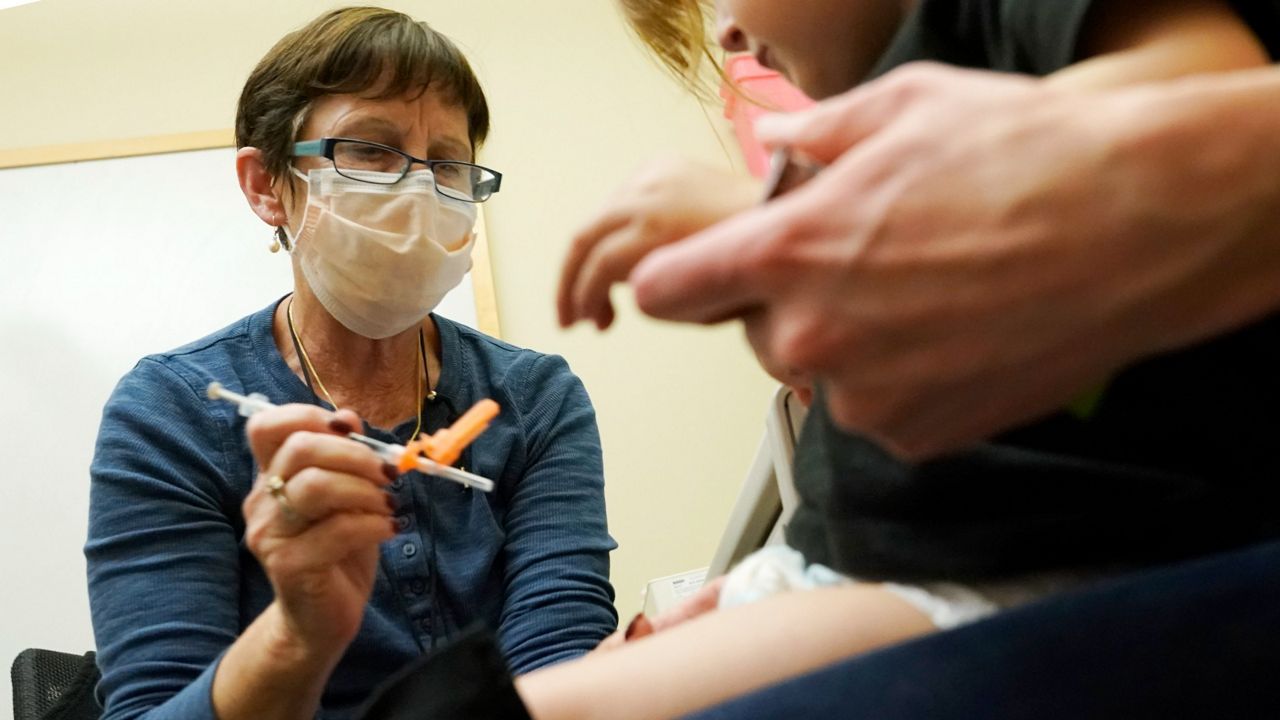The United States is seeing its highest level of flu hospitalizations in a decade as it continues to grapple with a surge of respiratory syncytial virus, or RSV, cases and COVID-19 infections are again on the rise, CDC Director Dr. Rochelle Walensky said Monday.
What You Need To Know
- The United States is seeing its highest level of flu hospitalizations in a decade as it continues to grapple with a surge of respiratory syncytial virus, or RSV, cases and COVID-19 infections are again on the rise, CDC Director Dr. Rochelle Walensky said Monday
- Walensky and Dr. Sandra Fryhofer of the American Medical Association kicked off National Influenza Vaccination Week by holding a call with reporters in which they provided an update on the triple whammy of respiratory illnesses filling many hospitals and urged unvaccinated people to get their shots
- The CDC estimates since late October there have been at least 8.7 million illnesses, 78,000 hospitalizations and 4,500 deaths from flu
- Walensky said health officials are starting to see an increase in COVID-19 cases since Thanksgiving
- While the rate of RSV, which poses the greatest threat to young children and older adults, continues to remain high nationally, the CDC has seen signs that the virus might have peaked in some regions
Walensky and Dr. Sandra Fryhofer, board chair of the American Medical Association, kicked off National Influenza Vaccination Week by holding a call with reporters in which they provided an update on the triple whammy of respiratory illnesses filling many hospitals and urged unvaccinated people to get their shots, both for flu and COVID. There is no RSV vaccine.
“The past several years have certainly not been easy, and we now face yet another surge of ailments, another moment of overstretched capacity and really one of tragic and often preventable sadness,” Walensky said.
Walensky said 47 states and territories have a high or very high level of individuals seeking treatment for flu-like illnesses, up from 36 jurisdictions the previous week. The CDC estimates since late October there have been at least 8.7 million illnesses, 78,000 hospitalizations and 4,500 deaths from flu. Two children died last week from flu, bringing the number of pediatric deaths this season to 14, she added.
“I see patients in my office every day, and I can tell you firsthand this year's flu season’s off to a rough star,” Fryhofer said. “It started early, and with COVID and RSV also circulating, it's a perfect storm for a terrible holiday season.”
Walensky said health officials are starting to see an increase in COVID-19 cases since Thanksgiving.
“This rise in cases of hospitalizations is especially worrisome as we move into the winter months when more people are assembling indoors with less ventilation and as we approach the holiday season where many are gathering with loved ones across multiple generations,” Walensky said.
According to the CDC, there were more than 300,000 COVID-19 cases reported last week, although that is believed to be an undercount. Last week, there was a 15% to 20% rise in COVID hospitalizations last week compared to the previous week, Walensky said.
While the rate of RSV, which poses the greatest threat to young children and older adults, continues to remain high nationally, the CDC has seen signs that the virus might have peaked in some regions, including in the South and Southeast, Walensky said.
But the CDC director said that while those declines are encouraging, “respiratory viruses continue to spread at high levels nationwide, and even in areas where RSV may be decreasing, our hospital systems continue to be stretched with high numbers of patients with other respiratory illnesses.”
Health officials say RSV, which infects most children by the time they are 2, are higher because the COVID-19 pandemic kept children inside where they weren’t exposed to the virus. Now doctors are seeing multiple years’ worth of RSV cases.
Meanwhile, Fryhofer said, there also is likely “a sense of complacency” about flu and COVID-19, with fewer Americans masking, diligently washing their hands or keeping their distance from others.
Walensky recommended three steps for mitigating the spread of respiratory illnesses.
1. Get vaccinated. There are updated versions of the flu and COVID-19 vaccines, which can lower the risk of infection, especially severe illness and death. She said early data shows people who’ve received the latest COVID-19 booster are 15 times less likely to die from the virus than an unvaccinated person, as well as less likely to die than someone who’s been previously vaccinated but is not to update on their shots. The CDC recommends flu and COVID-19 vaccines for people 6 months of age and older.
2. Take precautions such as covering coughs and sneezes, washing hands, staying away from people who are sick and staying home when feeling sick. Walensky also said the CDC encourages people to wear high-quality masks.
3. See a health care provider quickly if experiencing symptoms, especially those who are at higher risk for complications from a respiratory disease, including individuals age 65 or older, pregnant women and people who have certain underlying conditions. Treatments are available but are most effective during the first few days of an illness.
Vaccinating Americans has been a struggle. Less than 15% of adults ages 18 and older have received the updated COVID-19 booster shot. And Walensky said health officials are seeing a lower rate of flu vaccinations among higher-risk people compared to last year.
“I know everyone's tired of getting shots,” Fryhofer said. “We all have booster fatigue. But understand you could get really, really sick this year and ruin your holiday celebrations if you don’t get vaccinated.”



